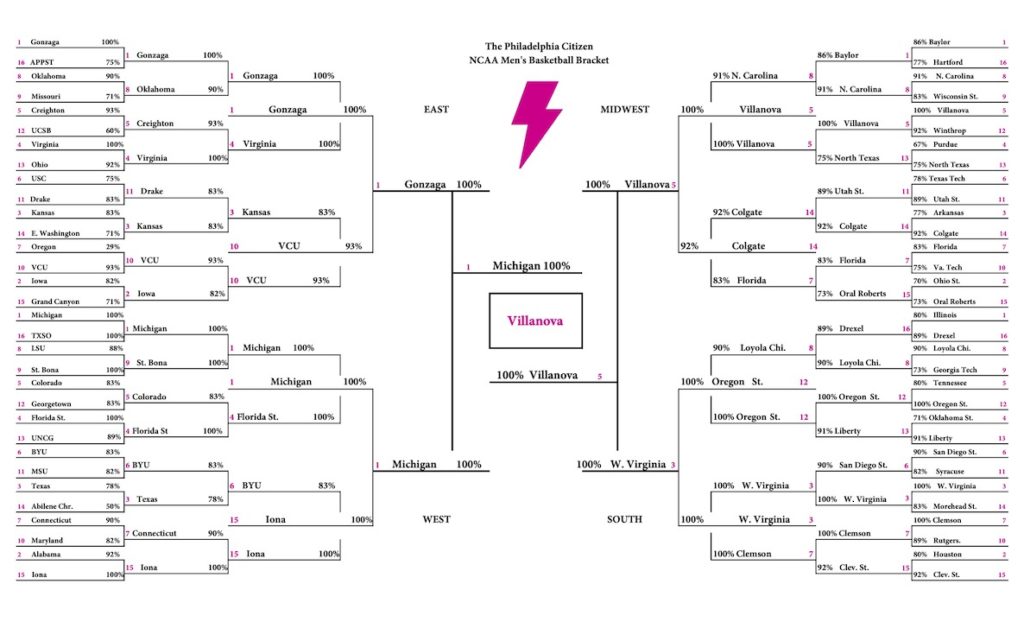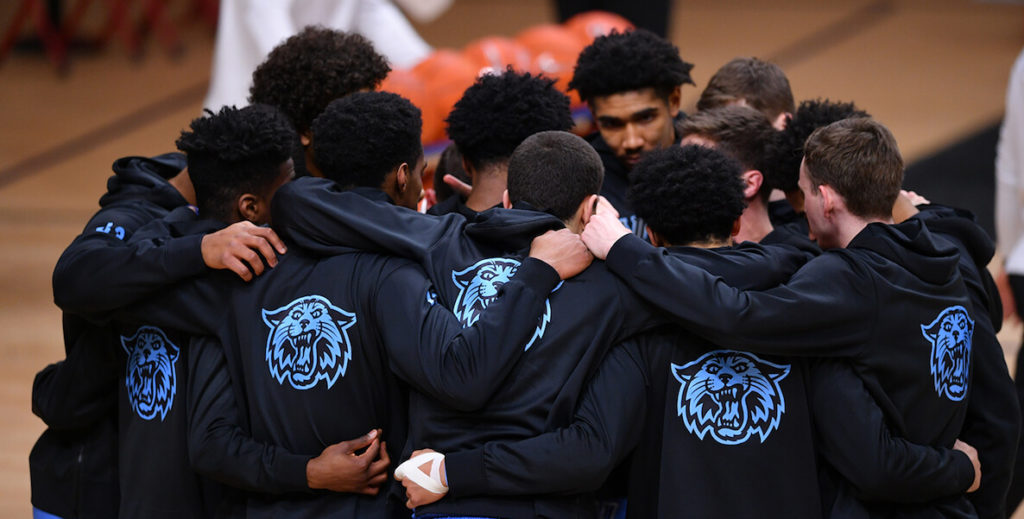Remember in 2018, when hometown heroes the Villanova University Wildcats won the NCAA men’s basketball championship? That was a proud moment for Philly.
But what made us at The Citizen even prouder is another championship move by the Wildcats, under Coach Jay Wright: Unlike many other universities, Villanova consistently graduates 100 percent of its student-athletes in six years. Compare that, for example, to 2014’s champs, University of Connecticut, where only 8 percent of players graduated on time.
Over here at The Citizen, with our annual March Madness bracket, we try to align our fandom with our worldview—and we invite you to do the same.
In addition to its tournament seeding, our bracket includes another metric for each team: Graduation Success Rates (GSR), which reflects the proportion of athletes a team has graduated within a six-year time frame. When the teams with a 100-percent GSR meet, we take into account another metric: Academic Progress Rates (APR), a multi-year tracking of a team’s classroom performance.

Data has been taken from the just-released annual report of The Institute for Diversity and Ethics in Sport at the University of Central Florida.
On average this year, men graduated at a rate of 82.4 percent across all teams. (The women’s teams, it should be noted, had a 93 percent average.) But the difference in rates between Black players and their white teammates was stark: White male athletes graduated 13.5 percent more often than Black male athletes. At three schools—UCLA, Oregon and Abilene Christian—graduation rates fell below 60 percent.
Nine schools in this year’s tournament have a GSR score of 100 percent, which means our big picks come from this actually-not-unrealistic list: Gonzaga, Virginia, Michigan, Texas Southern, St. Bonaventure, Florida State, Iona, Clemson, West Virginia, Oregon State—and our very own Villanova.
Any guess who we picked to win it all? Go Wildcats!

